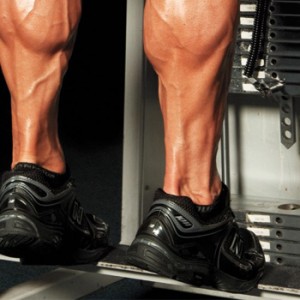Exercises


How to Get a Boxer Body Type: Effective Exercises and Tips
Useful articles
Boxers have a unique kind of physique. They’re ripped, with bulging muscles and barely-constrained strength. They’re lean, with very little bodyfat softening the lines and figure. They’re powerful – after all, they use that strength to fight. To many, this kind of body type is ideal. So how can you work to reach it?
Option 1: Become a Boxer
What better way to have a body like a boxer than to become a boxer? There are boxing gyms all around the world, of varying quality levels, and skill levels ranging from novice to expert. Finding a gym and participating in their program can help you progress towards that boxer body type.
Now, are you going to end up with a body like Mayweather or Rocky? Probably not. Most boxing gyms aren’t very serious, in the grand scheme of things. They’re there to help people learn the basics of boxing. They might do some moderate training a few times a week, but that’s only going to be enough to build some strength and work your cardiovascular system. Boxing gyms, unless you’re very dedicated, exist to teach you the forms, rules, and sport of boxing, not to make you a boxer.

You can dedicate yourself further to the sport (if you desire). Training more, following a program set up by a boxing trainer, can get you there. It’s a lot of work, though, and a lot of time invested.
At the same time, a lot of people use the boxer body type as an ideal body, but they don’t want to necessarily box. After all, boxing is a fighting sport, and a lot of people don’t want to sign up for that kind of pain. The risk of injury, the damage of a fight; boxers may look great, but they tend to have a lot of issues later in life.
So, if you don’t want to take the steps to become a boxer, you can do the next best thing: train like one.
Option 2: Train Like a Boxer
Those boxers you see on TV come in two forms: the actors playing a boxer, and the real boxers. Actors have a lot of secrets to looking way more ripped than they are. They’ll bulk up, cut aggressively, then dehydrate themselves to a dangerous level before the cameras roll. None of them look like that when they aren’t actively shooting.
Real boxers put in the work to build the strength and the body. Of course, even they tend to go in cycles of bulking and cutting, to build strength before a fight. In the off-season, you can see boxers with a bit more bulk on them than they have in the ring.

If you want to train like a boxer, you’re going to have to prepare yourself for a lot of work. Remember, these guys and gals look awesome, but they didn’t get that way by training three days a week after work. Boxing is their full-time job, and they spend a lot of time training for it. Here’s an idea of what you’d be looking at:
- Every morning, 7 days a week, 5-mile run.
- Boxing workout. Every day, do sessions of jump rope, bag work, pads and sparring, and ab exercises.
- Weight lifting. Each day of the week, work out a different set of muscles with weights. For example, you might do chest exercises on Monday, legs on Tuesday, back on Wednesday, and shoulders on Thursday.
Note that this isn’t a pick a bullet point scenario. You’re doing all of this, every week. The boxing workout alone is a few hours a day, and the weight lifting can add another hour or three to your sessions. You can see why this kind of lifestyle isn’t realistically compatible with the usual corporate 9-5 job. It’s a ton of work!
Option 3: High-Intensity Workouts
The third option is to go for high intensity, low duration workouts. The Zen Dudes prefer this option, working out for about an hour or two a day, 6 days a week.

Their plan is:
- 30 minutes warmup: 3 minutes skipping jump rope, 30 push-ups, 30 seconds of rest, repeated three times, capped with a fourth session of jump rope.
- 5-day split weightlifting. Each day, you’ll dedicate 30-45 minutes to lifting, focusing on a specific muscle group. You might do legs one day, chest another, back a third, and so on. Here’s a good option. Remember, these should be high weight, low rep strength training exercises.
- Daily core work. For 15 minutes after your weight lifting, do core work. Sit-ups, planks, crunches; it doesn’t necessarily matter, so long as you’re working that core. Remember, abs are important to boxers; they’re the armor that protects their organs. You need to make your abs pop to achieve that same physique.
- Finish with some boxing. Shadowboxing, sparring with a partner, bag work; you want to learn the forms and function and get your body used to working out all those muscles in conjunction.
You don’t need a ton of time every day to do this workout, but you do need to do it every day. It’s particularly high intensity, so you’ll feel like it kicked your ass when you’re done. That’s good! If you don’t feel worn out after an hour or two of working out, you’re not doing it hard enough.
Nutrition
There are a ton of different competing ideologies for nutrition when it comes to strength training. Personally, I’m in favor of a balanced approach. About 70-75% of your diet should be focused on calorie-dense, healthy, nutritious food. Lean meat like chicken, healthy veggies, rice, yogurt; there’s a lot of variety here.
Counting macros is probably a good idea. You don’t need to stick with strict calorie goals or limit yourself to a narrow set of meals because you’ll be balancing your diet around them.

There are a bunch of different online calculators to help you calculate macros to reach your goals. Use the high-intensity activity as your baseline, and aim for a high protein, moderate fat, low carb balance.
Remember, a lot of diet plans are focused on fat loss and weight loss. You’re not necessarily looking to do this, at least, it shouldn’t be the primary goal. You’re looking to build muscle, which means you need to give your body the fuel necessary to do it.
We said 70-75% of your diet, though; so what’s the rest? Treats! Diets are hard to stick to, so you can enjoy the occasional beer, ice cream, or other snacks to keep you on track. Otherwise, it’s easy to fall off the wagon and lose the path entirely.
Supplements
Supplements can help facilitate the processes your body uses to build muscle, lose fat, and grow stronger. They won’t do the job on their own, but they can make it a little faster and a little easier to reach your goals. Just make sure you’re taking healthy supplements, not anabolic steroids, Chinese research chemicals, or dangerous drugs.
Protein supplements are always good, but you need to remember to track what you consume as part of your macros. It’s easy to skew too far into protein and throw off your macro balance. Also, avoid protein bars and other protein-infused “treats”; they tend to be packed with sugar and additives you don’t want.

Creatine is a compound made from a couple of amino acids, and it’s key to the body’s muscle growth process. Supplementing more of it can help you build more muscle, faster.
BCAAs, or Branch Chain Amino Acids, are the building blocks of proteins and a lot of processes in your body use them. Supplementing them can, again, help speed up the processes that heal and strengthen your muscles after a workout.
Vitamins and minerals are, of course, also important. You need to make sure you’re getting enough of the important nutrients, in the right balance. Try to avoid overdosing on them – most are harmless in excess, but some have negative side effects. Often times, a multivitamin is more than enough.
Tips, Tricks, and Warnings
If you want to build the body type of a boxer, by all means, go for it. Just try to avoid the common pitfalls and traps that lead to failure. We’ve compiled a bunch of basic and general tips here to help you on your journey.
Remember it’s a journey. This is probably the most important tip to keep in mind. Depending on where you’re starting, you’re not going to end up with the body of a boxer in a matter of weeks. You’ll see all kinds of programs online like a 4-week program to achieve your goals, but will that really work? Probably not. It gets you started, and gives you an idea of what kind of workouts you’ll need to do, but it won’t deposit you in the ring with a fit body and a fighter’s spirit.
Building the body of a boxer will take a while, at least six months, though if you’re already fit and muscular, you’ve done a lot of the work already. If you’re starting with an office worker’s body, you have a lot more to do.
More importantly, you can’t just reach the body of a boxer and rest on your laurels. A boxer body type is not a destination, it’s a lifestyle. Remember this when you’re making dietary changes and establishing a workout routine. You have to stick with it.
Decide if boxing is important to you. The “body of a boxer” just means a ripped, fit body. You can achieve this without actually learning to box. If you want to learn how to box, you certainly can, and it’s a great idea. Boxing is a wonderful workout, and it can be a lot of fun, plus it trains you how to throw a few good punches in case you need them. Learning punches and combos helps with a strong foundation and gives you something to do with your cardio.

Train hard, but watch yourself. The best strength training is always going to be high weight, low rep. High-intensity workouts do the most damage to your muscles, and thus let you build the most strength. If you’re not pushing yourself, you’re not making gains.
The risk here is injury. Lifting more than you can handle is at once crucial and dangerous. Always train with a spotter, and learn how to fail properly. This is especially important with bench presses, deadlifts, and other heavyweight exercises. Make sure you know what to do if your muscles give out, so you can deal with your weights without hurting yourself.
Give yourself time to recover. Part of a balanced workout is recovery time. It’s why we rotate exercises when we target specific muscle groups, to give the others time to recover.
More important than just time is sleep. Sleep is extremely critical for health overall, and for strength training, it’s essential. Getting enough sleep can be hard, though, and restful sleep is often difficult. Try to adjust your routine and your life to practice proper sleep hygiene. That means a sleep routine that doesn’t vary, a relaxing pre-bed routine, and healthy sleeping habits.
Monitor tangible progress. It’s one thing to go into this intending to get a ripped, muscular physique, but that can be disheartening when you work out for weeks or months and don’t see it materializing. So, make some goals along the way. Monitor how much weight you’re lifting and watch it increase. Monitor your stamina and cardio. Monitor your weight and body fat percentages. You’ll be able to see progress happen, even if it’s not immediately visible from the outside.
Don’t forget to cut. Part of a boxer’s body is the cutting before a competition. Remember, you’re generally seeing these people at their best, not at their average. If you want that six-pack of washboard abs and the bulging veins when you throw a punch, you’ll need to cut. Cutting body fat reveals the muscles beneath.
Bulking and cutting is usually a cycle. Your bulk to build muscle while not caring that your body is also building fat. The important part is the muscle beneath, which you need to fuel properly. Cutting then removes the fat without sacrificing the muscle. Once you have the cycle established, you’ll be able to see those tangible gains.
Thank! Your message has been sent successfully.











Questions and answers 0